USS Jacob Jones DD-130 (1/2)
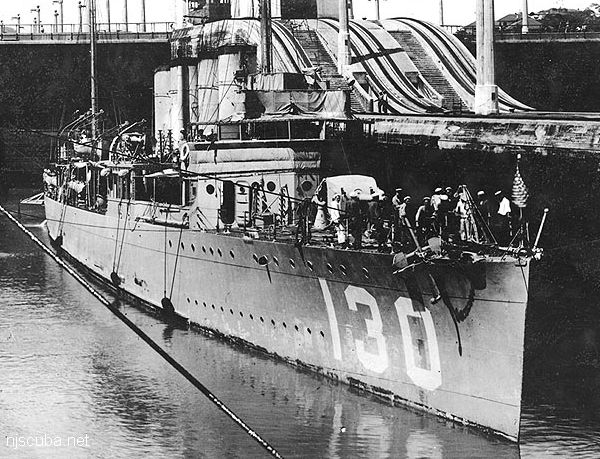
- Type:
- shipwreck, destroyer, Wickes / Tattnall class, U.S. Navy
- Built:
- 1919, Camden NJ USA
- Specs:
- ( 314 x 31 ft ) 1211 gross tons, 145 crew
- Sunk:
- Saturday February 28, 1942
torpedoed by U-578 - 134 casualties - Depth:
- 120 ft
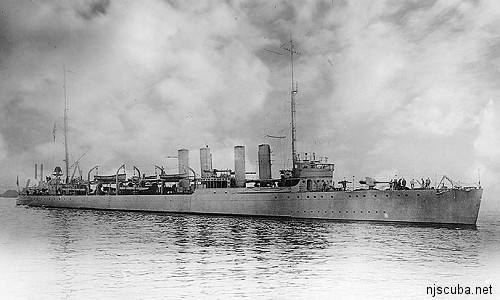
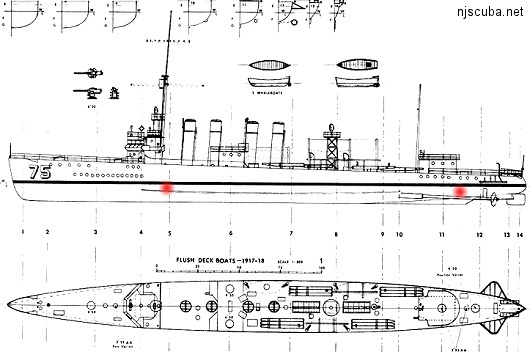
The approximate locations of the torpedo strikes are indicated
The Wickes class destroyer was an ambitious design for its day, combining high speed with heavy armament, but at a cost of range, handling, and sea-keeping. Nonetheless, they were generally considered satisfactory, and a great improvement over previous ships. Commonly known as "Flush Deckers" or "Four Stackers", most were mothballed after World War I, only to be brought out again in the 1930s to replace newer ships of the derived Clemson class that had worn out prematurely. At this time, much of the armament was changed to give them better anti-aircraft and anti-submarine capabilities.
"Flush deck" refers to the main deck running in an uninterrupted straight line from bow to stern, unlike later designs that had raised bows or forecastles. The low bow made them very wet in rough seas. The narrow V-shaped stern and long narrow hull gave them a large turning radius. At least half of the internal space must have been dedicated to propulsion machinery to achieve the design speed of 35 knots, leaving little room for fuel, ammunition, stores, and crew.
50 of these vessels were famously traded to England in the early stages of World War II in exchange for 99-year leases on military bases. Although they were used for convoy duty, their trans-Atlantic range was marginal, something that was eventually solved by at-sea replenishment. Many were converted to other uses, such as training, seaplane tenders, mine-laying, and fast transport. Another famous incident involving "Flush Deckers" took place on September 8, 1928, when seven destroyers ran at high speed onto the rocky coast near Santa Barbara California. Bad weather and bad navigation are blamed. All seven ships remain where they struck; the area is now part of Vandenberg AFB. Several other Wickes-class ships are divable off Southern California, sunk as targets or for filmmaking.
While the Jacob Jones may have an interesting history, it is a good example that this does not always translate into a good dive. In fact, after a long boat ride, all you are likely to find is some low unidentifiable wreckage that could easily be an old barge, or anything. The ship was quite small and lightly constructed, and was devastated by multiple explosions during the sinking, breaking into two or more separated pieces. Nothing stands more than 3 or 4 feet above the bottom, although this could change with shifting sands.
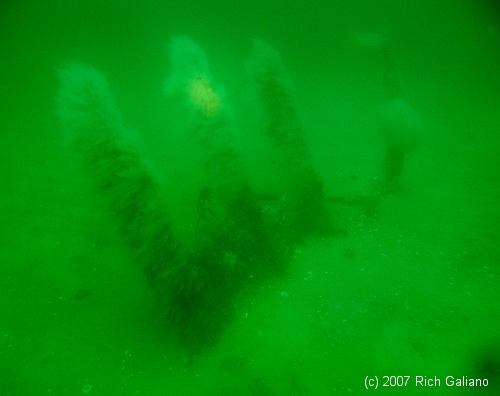
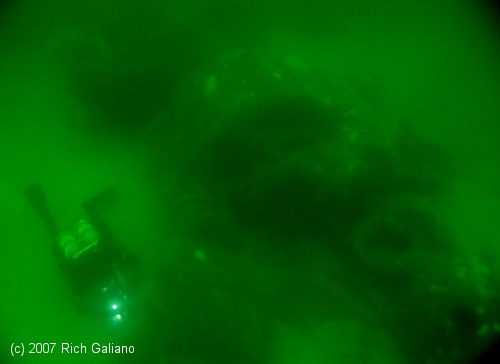
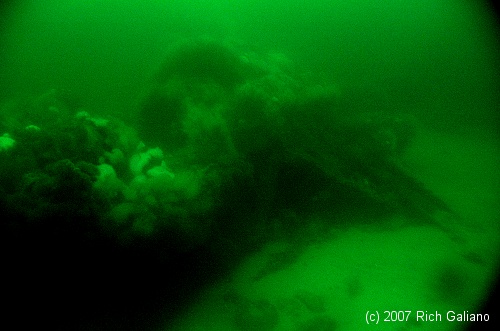
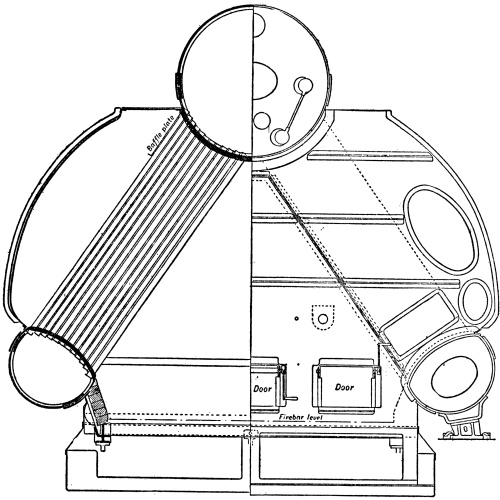
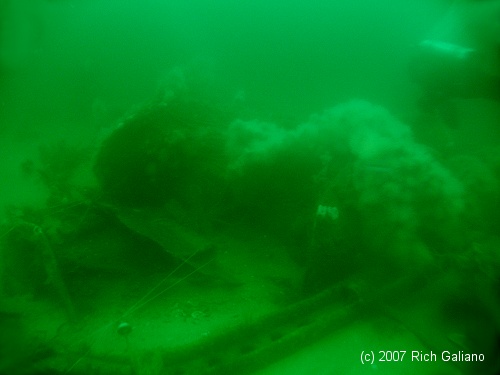
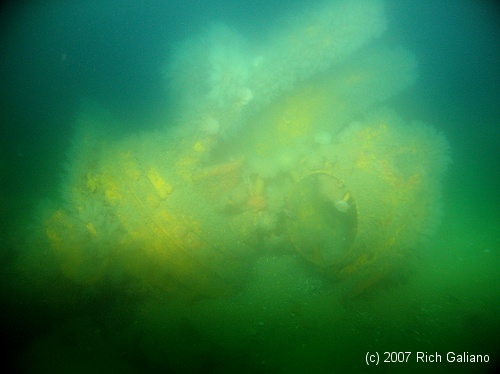
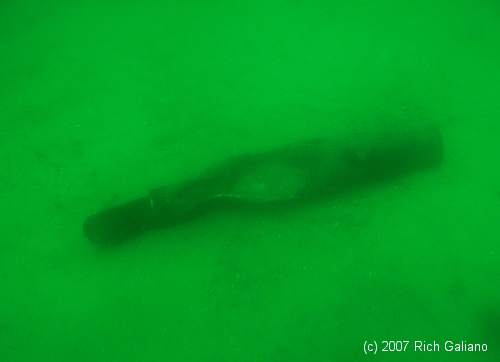
Gary Gentile gives a picturesque description of the wreck in his book Shipwrecks of Maryland and Delaware, including torpedo tubes, triangular swim-through boilers, and other highlights. Nothing like that remains. Except for the odd artillery shell, the Jacob Jones today is completely unremarkable. Visibility is generally very good, sometimes in excess of 100 ft, averaging 30 ft or so.

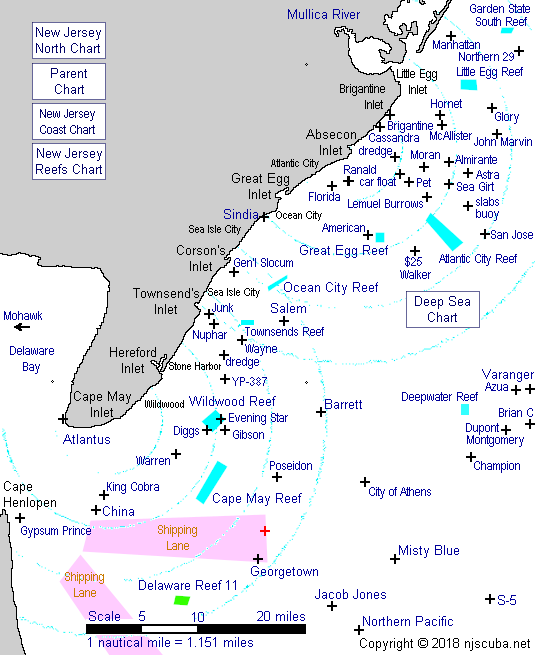
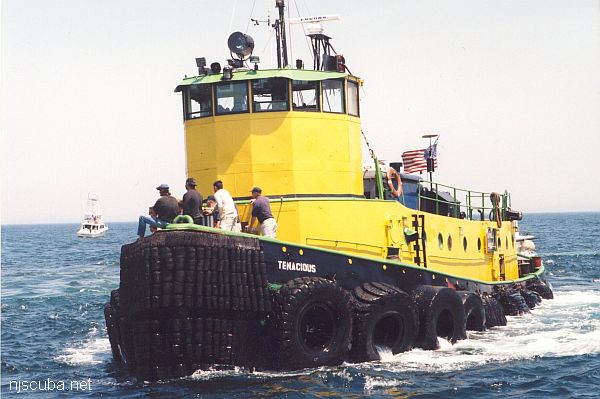
Questions or Inquiries?
Just want to say Hello? Sign the .